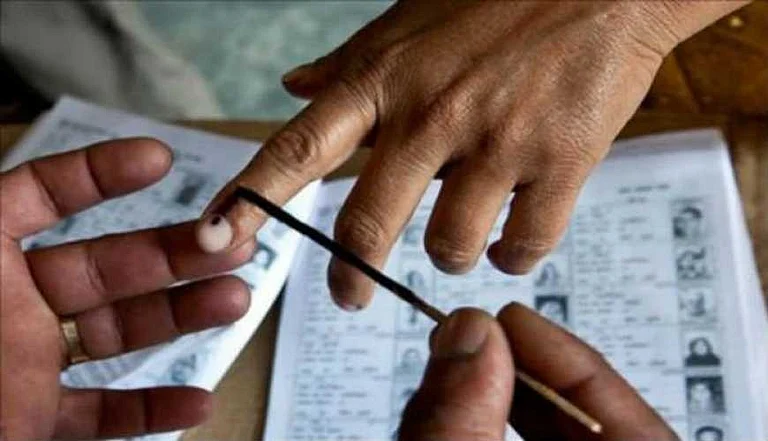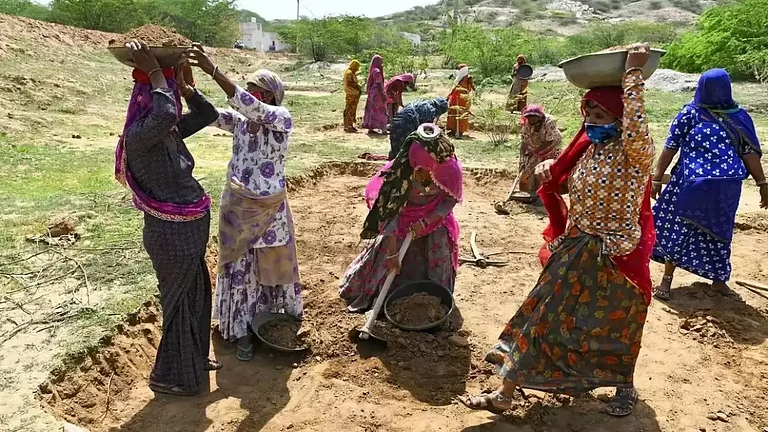If you walk through the alleyways and neighbourhood streets in different parts of Bengal today, graffiti on walls would tell you three different stories. First, that of the ruling Trinamool Congress (TMC) which is facing serious constraints with recruitment scams that has resulted in the invalidation of the fraudulent appointments of 25,753 teachers and non-teaching staff by the state’s School Service Commission (SSC) in state-run and state-aided schools. Mafia raj in Sandeshkhali, which involves issues ranging from landgrab to molestation or alleged rape by TMC goons patronised by party ministers. Second, the Bharatiya Janata Party (BJP) which harps on these two issues and projects Prime Minister Narendra Modi as a corruption free and honest gentleman―a contrast to the TMC’s whole cabinet. Third, the Left-Congress, which addresses everyday issues ranging from the TMC’s corruption to price rise under the Modi government. Meanwhile, they also project the notion of “setting” between the TMC chief Mamata Banerjee and her nephew Abhishek Banerjee with the BJP so that they are not arrested, while others including Arvind Kejriwal and Hemant Soren are behind bars.
They key election issues from the visual presentations can be derived using the domains of visual anthropology and a quick qualitative analysis would reveal the following:

Perhaps the most popular slogan for the Left-Congress has been “setting achhe taire/chorer matha baire” (since there is a setting between the TMC and the BJP, the chief of the thieves is not arrested). Meanwhile, the TMC has capitalised mostly on their welfare schemes. Their graffiti are full of scheme names with a request to vote for the party to continue getting the benefits along with the projection of Banerjee as the mother goddess, Durga.
Behind this visual and perceptual dynamics, we need to understand the extent of the TMC’s welfare measures and place it in context. If one looks at the welfare measures and the extent of funding towards them, it would be interesting to see that the TMC’s cash transfer scheme drastically changed in 2021. Analysis of budget statements of the government shows that the number of direct cash beneficiaries under the schemes which doesn’t require any special attainments (for instance, Yubashree―unemployment allowance, Rupashree―marriage assistance scheme) becomes 1,62,41,585 in 2021-22 which is 15 times more than 2020-2021 figure which was 10,30,615 in 2020-2021. This happens because of the initiation of the Laxmir Bhandar in that year.
Another relatively smaller rise is noted in 2018-2019 when Rupashree scheme was launched. Understandably, the major rise in 2021 is because of the launch of Laxmir Bhandar in which women aged between 25 and 60 living without any formal income support are supposed to become the beneficiary.
Of course, it is expected that women beyond this age group would get old age pension support. When a population wise calculation is made, as per the 2011 census, West Bengal has a population of 91,276,115, out of which 21,449,532, roughly about 23 per cent of the population is getting direct cash transfer in their account through the three schemes only. If one adds to the other benefitting schemes like old age pension to different categories of people, farmers pensions, a variety of scholarship schemes, the number of beneficiaries rise up to an impressive 43,442,934 for 2023-2024 financial year which is about 47.59 per cent of the state’s 2011 population.
Additionally, a total of 90,000,000 people are recipients of free foodgrains through the Public Distribution System, and 24,500,000 people are beneficiaries of the Swasthya Sathi Scheme which provides free treatment for up to Rs 500,000. Consequently, the TMC’s spending on welfare populism occupies the lion’s share of the state’s budget. It is estimated that the state’s debt burden has grown to 48 per cent in the past five years. Estimates of the Reserve Bank of India shows that four schemes of the TMC government have taken up 23.8 per cent of the state’s revenue from its sources and 9.5 per cent of its total revenue.
The use of populist public policies during election canvassing is only natural for the TMC which is far ahead of the BJP which harps mostly on Hindu/Muslim issues and issues of corruption. While corruption as an electoral issue against the TMC is dated to its first term in West Bengal, my ethnographic work has shown that people have been disciplined with corruption in West Bengal and that they find it okay to pay bribe to get things done. Does the same condition prevail today? Perhaps not. Everyday corruption and large scams bring out different images in the public sphere. However, it is difficult to imagine that corruption alone can further affect the TMC in the ongoing elections.
If we contextualise the sudden rise in the number and extent of direct cash transfer schemes, we need to look at the electoral data for the past few years. Between the assembly election of 2016 and the Parliamentary elections of 2019, the BJP gained an impressive 30 per cent of the vote share to become the official opposition in the assembly in 2021. The TMC has had its share in the politics of polarisation by organising Ram Navami or promoting Ganga-aarati, but the party was quick to realise the uneven nature of competition between them and the BJP in terms of polarisation.
For example, Snigdhendhu Bhattacharya in his book Mission Bengal: A Saffron Experiment reveals the extent of the Sangh Parivar’s grassroot organisations used in polarisation in comparison to the TMC, which is formidable as the ruling TMC doesn’t really have a grassroots cadre base. Their reliance on a few powerful local elites and of late non-formal crony capitalists and existing club-like organisations are no match to the mighty Sangh Parivar which has adopted a variety of means, ranging from temple politics to schools. Hence, the TMC is trapped with a triple underlying obligations: first, they are exhausted with their direct benefit giving schemes which now caters about 50 per cent of the state’s population and has its serious consequences on the state budget; second, they have to find out an avenue to deal with the corruption charges against them along with possibilities for job creations; and finally, they should somehow address the competitive communalism which is on a rise for the past few years.
With the kind of cash transfer schemes and a parallel development of a cadre base circulating around the cronyism of non-formal capital, in which a section mafia entrepreneurial capitalists have developed, the TMC perhaps has reached to its peak in terms of political control. Unless the party reinvents again, it would be difficult for the TMC to sustain itself in the near future. For a while, the party might feel safe with the extent of support they had in the 2021 assembly elections and the kind of service delivery they have attained so far, the question however remains: for how long? It would be interesting to see how the party, if at all, reinvents itself to continue in the near future.
(The author teaches anthropology at the Dr A P J Abdul Kalam Government College, Kolkata)
(Views expressed are personal)























